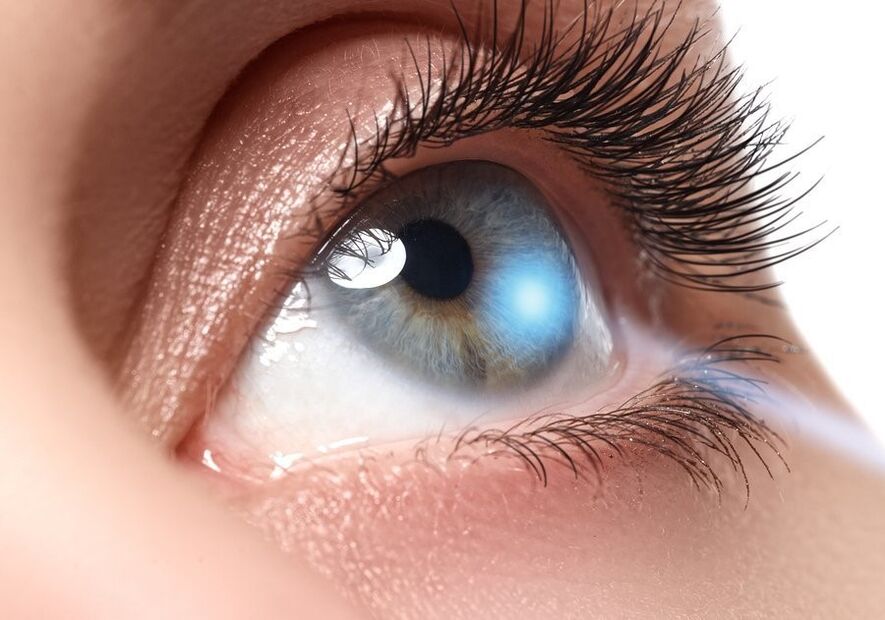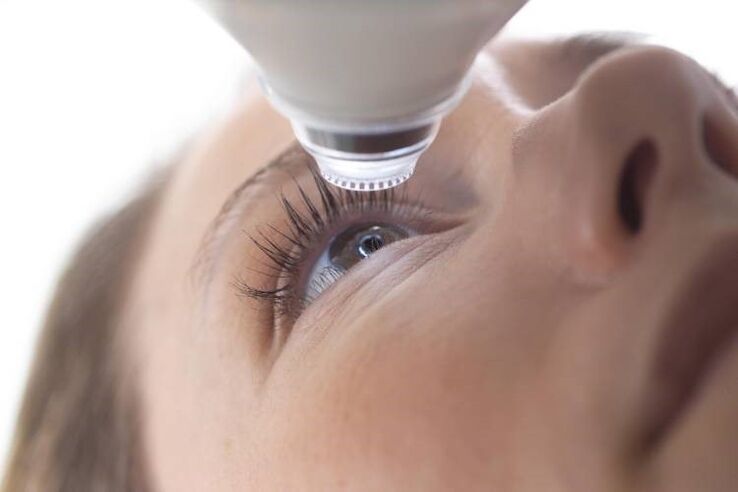Disorders of the visual system are well suited for correction, but if the disorder is neglected or conservative treatment fails to bring the desired results, then surgery to restore vision is recommended. It allows you to eliminate the pathological processes of the visual system, maintain its function, eliminate the possible consequences of the disease.
Modern ophthalmology offers several effective ways to restore operation of optical systems, but before considering the type of ophthalmic surgery, it is important to understand the indications for which it is performed and the possible consequences.

When is vision rehabilitation surgery necessary?
Eye surgery to restore vision falls under the category of refractive surgery. The main goal of this treatment is not only to preserve the function of the visual system, but also to reduce reliance on contact lenses and eyeglasses. Among the main indications for surgery, various diseases can be distinguished:
- cataract;
- glaucoma;
- keratoconus;
- Shortsighted;
- strabismus;
- retinal atrophy;
- lens replacement;
- Eye injury.
All of these diseases can be treated without surgery, provided that no irreversible pathological processes have occurred in the structures of the visual system.
Operation type
There are several ways to restore vision with surgical treatment. They all have their pros and cons, but sometimes they are considered the only way to keep the visual system functional. Consider the most effective type of surgery to restore vision.
Laser correction
In modern ophthalmology, laser vision correction is considered the "gold standard", allowing you to restore vision with minimal risk and consequences. In carrying out such operations, high-tech equipment is used, allowing defects in the optical system to be corrected with high precision. The indications for laser vision correction are myopia, hyperopia and astigmatism. All of these conditions are combined by the generic term "refractive error, " which means a disorder associated with focusing in the eye. There are several types of laser corrections:
laser. The procedure is performed using a thin cornea, and the laser beam itself affects only the upper layer of the eye. During surgery, the epithelium and membrane form a valve, which is then fixed with a soft lens and removed a few days later. This procedure takes 5-7 minutes and results can be seen on the 4th day after the procedure. LASEK vision correction is considered the only method available for children.
Laser surgery. Basic operations to restore vision, allowing you to get rid of myopia of varying degrees of complexity, as well as the early stages of astigmatism. During surgery, a laser beam penetrates the deep layers of the eyeball, changing the shape of the surface layer of the cornea and eliminating defects in deep structures. The operation time for each eye is no more than 15 minutes. The disadvantage of this procedure is that the anatomy of the patient's eye cannot be predicted.
Laser vision correction is very effective, but even with high-quality surgery, vision loss over time can be a sign of re-correction.

Vitrectomy
Vitrectomy is performed if complete or partial removal of the vitreous of the eye is required. The procedure is performed under general anesthesia. This operation may take up to 3 hours. During the procedure, a small puncture is made in the eye socket through which the necessary operations are performed.
The main indication for surgery is to restore vision after hemorrhage or age-related retinal detachment. After surgery, complications such as corneal edema, increased intracranial pressure, or further vision loss may occur. Prognosis after surgery depends on many factors, especially the degree of pathological process and the type of prosthesis that replaces the vitreous. As the optic nerve is irreversibly damaged, the effects of the surgery will wear off.
Scleroplasty
Eye surgery to strengthen the outer shell (sclera) of the eye. It is not used to correct vision, but to normalize nearsightedness in at-risk patients. Scleroplasty is usually performed in teenagers because it is during this time that the shape of the eye changes.
During the procedure, a special flap is inserted behind the back wall of the eyeball to strengthen the sclera. More often polymeric or biological components are used. After a while, adhesions develop at the injection site, and after a few months, blood vessels grow into the flap, which will continue to support the work of the visual system.
lens replacement
This operation is performed in the presence of clouding of the lens or other degenerative processes. In most cases, the indications for appointments are cataracts, glaucoma. The procedure is quite difficult and the implants are selected individually, which will correspond to the patient's gender, age and other characteristics of the body.
Lenses are replaced under local anesthesia. During the procedure, doctors make a small incision with a laser and then use special tools to liquefy the patient's lens before removing it from the eye. After surgery, the prepared graft is installed. The procedure lasts no more than 30 minutes, then stitches are made, and the patient stays in the clinic for a few hours before going home.
Complications after this surgery are extremely rare. Usually after this, laser vision correction is required.
Corneal transplantation (corneal replacement)
This operation is quite complicated and requires a high degree of professionalism of the surgeon. One indication of its implementation is the treatment of congenital and acquired defects that manifest as a consequence of injury or certain diseases.
The operation time does not exceed 30 minutes. During this procedure, the doctor removes part of the cornea with a laser or scalpel and places the donor tissue in place. The sutures are kept for about a year after surgery, and then special lenses are chosen to reduce the risk of infection. The recovery period is up to 4 weeks and includes regular eye drops and antibacterial drops.
cross-linked
It is indicated for various diseases of the cornea and allows you to strengthen the ligaments and other fibers in the corneal tissue of dystrophic or keratoconus. During this procedure, local anesthesia is used, then part of the cornea is removed using a special device, vitamin B2 is injected, and irradiation is given to strengthen the tissue by more than 200%.
For the first time after surgery, patients wear protective lenses and visit their ophthalmologist regularly. If the surgery is successful, the effects can last up to 10 years.
retinal laser coagulation
Surgery to repair retinal tissue. 70% of surgeries have a positive outcome and the patient himself has the opportunity to return to a normal lifestyle a day later. The operation is performed under local anesthesia, and the operation time does not exceed 20 minutes.
Before surgery, drops are put into the eye to dilate the pupil, protective lenses are worn, and the laser beam is passed through the lens. Due to the heat, damaged cells and small blood vessels stick together.
The indications specifying this procedure are retinal diseases or tumor-like processes. In some cases, after laser coagulation of the retina, the lens becomes inflamed and clouded, which requires additional treatment.

How to prepare
If surgical treatment is indicated, the doctor prescribes a series of tests that provide helpful advice on preparing for specific procedures to remove defects in the visual system:
- One week before surgery, glasses and contact lenses should be stopped.
- Pass all necessary tests and pass the prescribed diagnosis.
- Do not drink alcohol for 3-4 days.
- Say no to cosmetics.
- Rest well and sleep well.
With strong excitement, you can take a mild sedative on the advice of your doctor.
Postoperative period
Before undergoing vision restoration surgery, the ophthalmologist familiarizes the patient with the rules of preparation, and the postoperative period is also considered an important period. Following a number of rules following any surgery, the risk of complications is significantly reduced and the prognosis for successful recovery increases:
- You will need to lie on your back for the first 2 days.
- In the early postoperative period, do not rub your eyes or use cosmetics.
- Wash your hands thoroughly before applying eye drops.
- Wash your face with boiling and lukewarm water to avoid getting in your eyes.
- Eliminate long TV or computer interruptions.
- Delay pregnancy plans for a few months.
- In the first few months, rule out strenuous physical exertion, solarium, swimming pool or sauna.
- Avoid prolonged exposure to sunlight.
- Avoid alcohol and smoking.
- Proper and healthy nutrition.
After any surgery to restore vision, it is necessary to visit an ophthalmologist regularly, to have the necessary tests, and to use prescription medications. Following all the rules will help minimize the risk of possible complications and improve vision and overall health.
Find
Surgery to restore vision is performed when other treatments are not working as expected or when the disease is spreading. Therefore, in order to prevent the severe stages of any eye disease, you need to visit an ophthalmologist regularly and receive the necessary treatment. After all, the earlier the disease is diagnosed, the better the prognosis for recovery.























